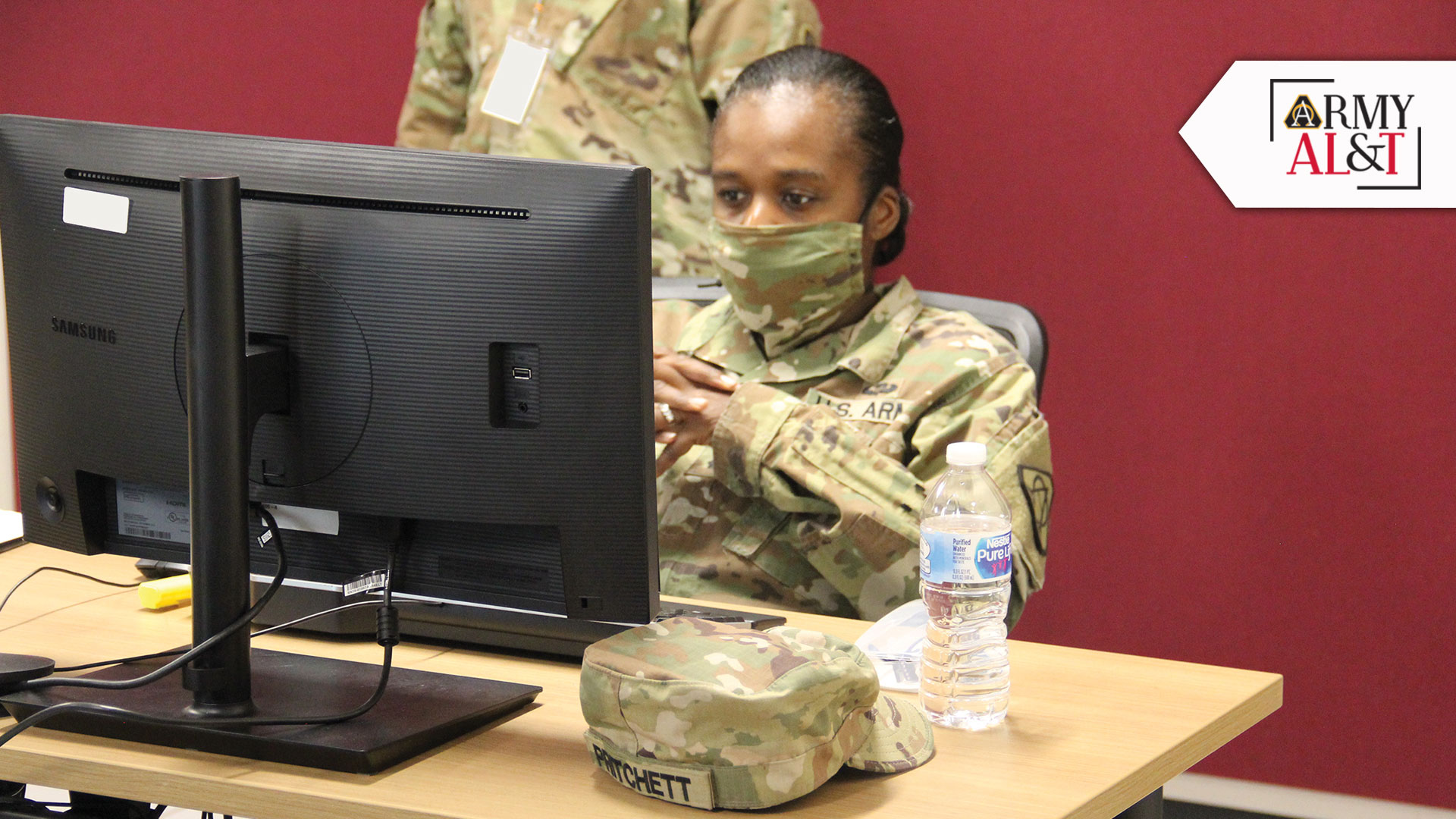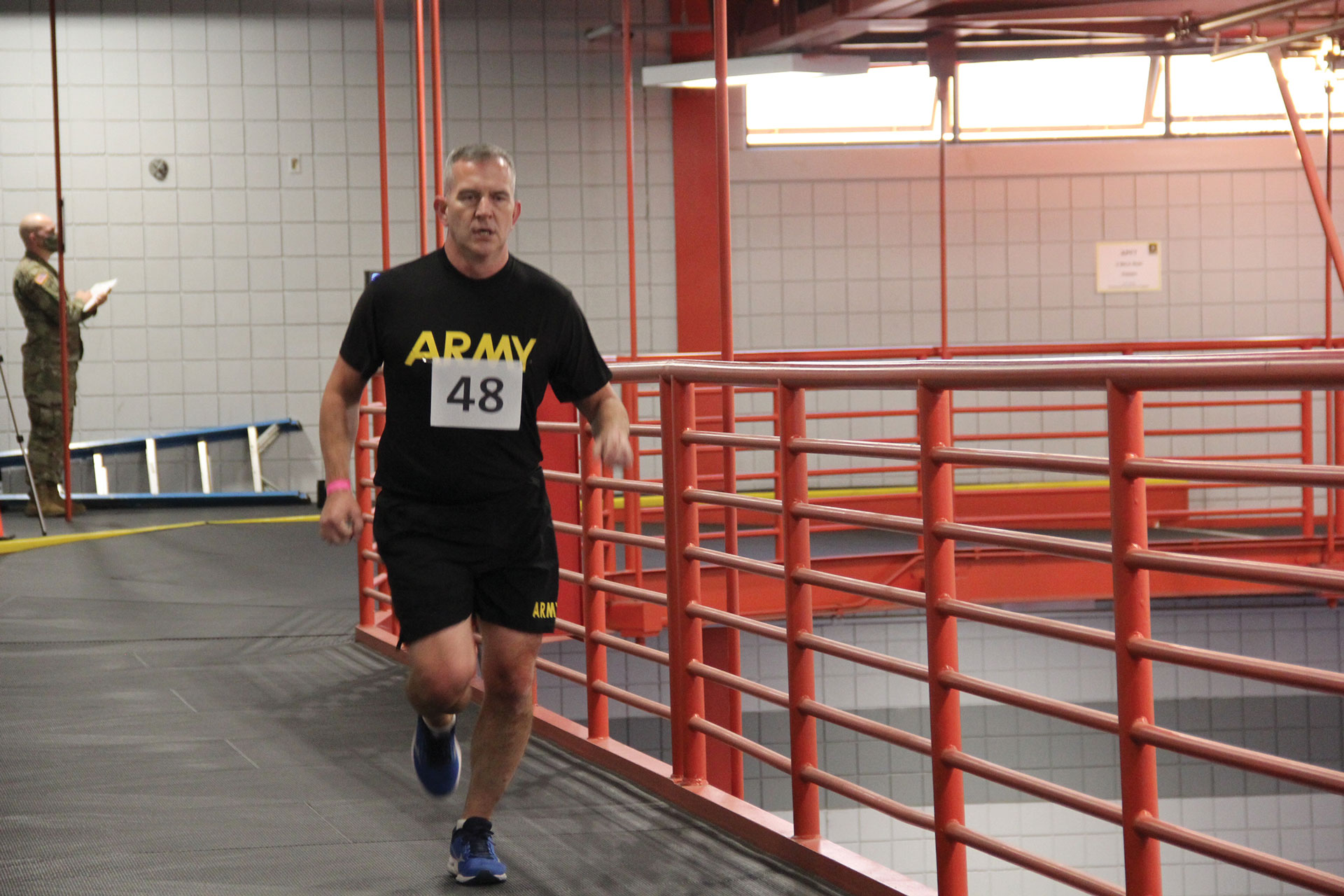
GOLD AT FORT KNOX: Lt. Col. (P) Rhea Pritchett, from the Program Executive Office for Simulation, Training and Instrumentation, takes one of the assessments geared toward measuring participants’ leadership competencies during ALAP at Fort Knox, Kentucky, in November. (Photo by Army Talent Management Task Force)
FROM THE DIRECTOR FOR
ACQUISITION CAREER MANAGEMENT
CRAIG A. SPISAK
The Acquisition Leader Assessment Program adds more data to the selection of officers for command and key billet positions.

Craig A. Spisak Director, U.S. Army Acquisition Support Center and Director, Acquisition Career Management
Employing the best talent for the Army Acquisition Workforce is paramount if we’re to succeed at our mission: to get the very best capabilities into the hands of our warfighters. We’ve taken a large step in improving those efforts with the introduction of an exciting new initiative, the Acquisition Leader Assessment Program (ALAP)—the first run of which took place in November at Fort Knox, Kentucky—which will help determine which officers in the Army Acquisition Corps are ready for centralized selection list (CSL) command and key billet positions.
The Army Director of Acquisition Career Management (DACM) Office, working in conjunction with the Army Talent Management Task Force, developed ALAP to expand on the current method of determining which officers will be chosen for CSL positions. The current CSL file review process has served the Army well; ALAP adds another dimension to the existing process that further helps identify whether officers are ready for command. If a candidate is identified as not yet ready for command, that doesn’t mean they’re not ever ready. Candidates are offered developmental feedback before leaving ALAP and are also offered coaching and, if eligible, have an opportunity to participate in ALAP again. The result is an officer who can improve their leadership and can be a stronger candidate in the future.
ALAP follows the model of the Battalion Commander Assessment Program (BCAP), the first run of which was held in January 2020, and the Colonels Command Assessment Program, first held in September, under the leadership of the Army Talent Management Task Force. Gen. James McConville, chief of staff of the Army, announced the inaugural BCAP at the annual meeting of the Association of the United States Army in October 2019, stating: “We spend more time and more money on selecting a private to be in Ranger regiment than we do selecting what I would argue is one of the most consequential leadership positions in the Army, our battalion commanders.”
ALAP aims to take that same approach to amassing talent assessment data to find acquisition officers who are ready for command and key billet positions. November’s first run included colonels and lieutenant colonels (promotable); this year the program will be expanded to include lieutenant colonels and majors (promotable). The DACM Office also expects to include centrally selected civilians at the GS-14 and GS-15 levels as well. As ALAP integrates our civilian leaders, there will be some minor modifications to ensure that we have a fair and consistent assessment for all of our leaders.

TAKE ALAP: Lt. Col. (P) Kenneth Darnall, from the Defense Contract Management Agency, participates in the Army Physical Fitness Test, one of the comprehensive ALAP assessments that help determine participants’ potential for command, at Fort Knox, Kentucky, in November. (Photo by Army Talent Management Task Force)
The assessments from the inaugural ALAP included:
- Peer and subordinate assessment. Peers and subordinates of the candidates chosen by the Army provided assessments of the candidates using observed behavior scales to assess the candidate’s leadership effectiveness and frequency of counterproductive leader behaviors.
- Height and weight assessment. Failure to meet the Army’s standards was a screening event.
- Physical fitness. The candidate is scored on the Army’s Physical Fitness Test.
- Testing cognitive and non-cognitive abilities. These inform how well leaders will be able to handle the complex missions they are assigned.
- Writing assessment. Two writing assessments help determine the candidate’s written communication skills. The candidate is first required to provide a persuasive argument to a strategic article, which tests the candidate’s analytical and communication abilities. The second writing test is strictly on style and grammar.
- Psychometric assessment. These assessments measure cognitive and non-cognitive abilities, as well.
- A panel interview with senior Army leaders. It is a double-blind interview with a screen preventing the leader and panel members, the majority of whom are acquisition general officers and members of the Senior Executive Service (SES), from seeing one another. This mitigates potential biases and focuses the candidates on responding to the question and the panel members on assessing the response.
CONCLUSION
The legacy process of selecting leaders for command in the Army Acquisition Workforce has served us well. But ALAP will add more data points, providing a more holistic picture of an acquisition leader’s leadership and potential, to help us make better selection decisions for these critical positions that will lead our military and civilians in our most important acquisition efforts. We owe them, the AAW and the Army no less.
| A TOUGH FOUR DAYS
In November, 17 Army acquisition officers attended the first Acquisition Leader Assessment Program at Fort Knox, Kentucky, and participated in a grueling four-day program: Day Zero: Height and weight measurements. Anyone who did not meet the Army standard was sent home. Day One: Kicked off with a series of psychometric assessments to inform the panel on cognitive and non-cognitive measures. Day Two: Started with the first of two writing assessments. The first was a strategic writing exercise that required the candidate to respond to a strategic article. This exercise sought to determine the candidate’s ability to think critically and to write clearly. After lunch, the candidates took a series of cognitive and non-cognitive assessments. After a break, the candidates took another writing test, this one to assess the officer’s ability to recognize proper grammar. Day Three: Started with an interview with an operational psychologist. Then the candidates took the APFT. Day Four: Each candidate completed a double-blind panel interview with general officers and members of the SES.
|







